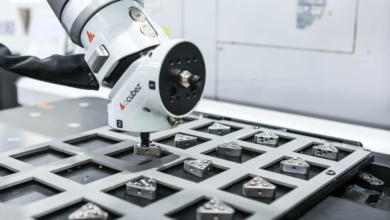How to Communicate Your Vision to a Web Design Company Effectively

Effective communication is the backbone of any successful web design project, especially for small business owners, startups, and marketing professionals. Ensuring that your vision is clearly understood by a web design company can mean the difference between a website that is just functional and one that truly embodies your brand. In this guide, we’ll explore how to convey your ideas effectively, collaborate smoothly, and ensure your website represents your business perfectly.
Understanding Your Vision
Defining your vision is the first step toward effective web design communication. Start by identifying what your brand stands for and the message you want to convey. Consider your target audience and how you want them to perceive your brand. Jot down key elements like color schemes, fonts, and styles that align with your brand personality. These elements will serve as a guidepost when discussing your ideas with a web designer.
Conceptualize your brand in a way that’s easy to articulate. Create a mood board or a collection of images and websites that inspire you. This visual representation can help your web designer understand your tastes and preferences. A clear vision lays the foundation for a successful partnership with your web design company.
Finally, prioritize your website’s purpose. Whether it’s attracting new customers, showcasing products, or providing information, understanding your primary goal will shape the overall design approach. This clarity ensures that every design decision supports your business objectives.
Research and Preparation
Selecting a web designer who aligns with your vision is crucial. Begin by researching potential web design companies that have experience working with businesses similar to yours. Look for portfolios that resonate with your style and objective. Reviews and testimonials from previous clients are also invaluable in assessing a company’s track record and reliability.
Prepare a shortlist of potential designers and conduct interviews to gauge their understanding of your industry and vision. Discuss your goals and ask about their design process to see if it aligns with your expectations. A designer who listens and understands your needs can bring your vision to life more effectively.
Finally, consider your budget and timeline. Be upfront about your financial constraints and deadlines during discussions. This transparency ensures that both you and the design company are on the same page from the start, reducing misunderstandings and potential conflicts down the line.
Crafting the Brief
Creating an effective design brief is a critical step in communicating your vision. Start by outlining your goals, including what you hope to achieve with the website. Include specific features you want, such as e-commerce capabilities or social media integration. The more detailed your brief, the better your designer can tailor the design to your needs.
Clearly define your target audience and any market research you’ve done. This information helps the designer create a user-friendly interface that speaks directly to your customers. Be sure to include any existing branding guidelines, like logos and color schemes, that the website should adhere to.
Finally, provide examples of websites you admire. Highlight aspects you like, such as layout, navigation, or visual elements. This gives the designer a point of reference and a clearer idea of your aesthetic preferences, ensuring the final product aligns with your vision.
Communication Best Practices
Maintaining open lines of communication throughout the design process is essential. Schedule regular check-ins to discuss progress and address any concerns. This keeps both parties aligned and ensures that the project stays on track.
Be receptive to feedback from your designer. Remember, they are experts and can offer valuable insights into what works best for user experience and functionality. Collaborate and find solutions together, rather than dictating every aspect. This collaboration often leads to a more polished and effective final product.
Finally, document all communication and decisions made during the project. This creates a reference point for both you and the designer and helps avoid misunderstandings. Effective communication fosters a positive working relationship and ultimately results in a website that meets your expectations.
Conclusion
In the world of web design, clear communication is not just beneficial—it’s essential. By defining your vision, conducting thorough research, crafting a detailed brief, and maintaining open communication, you can ensure that your web design project is successful and aligns with your brand. These steps not only help create a captivating online presence but also foster a positive relationship with your web design company.




